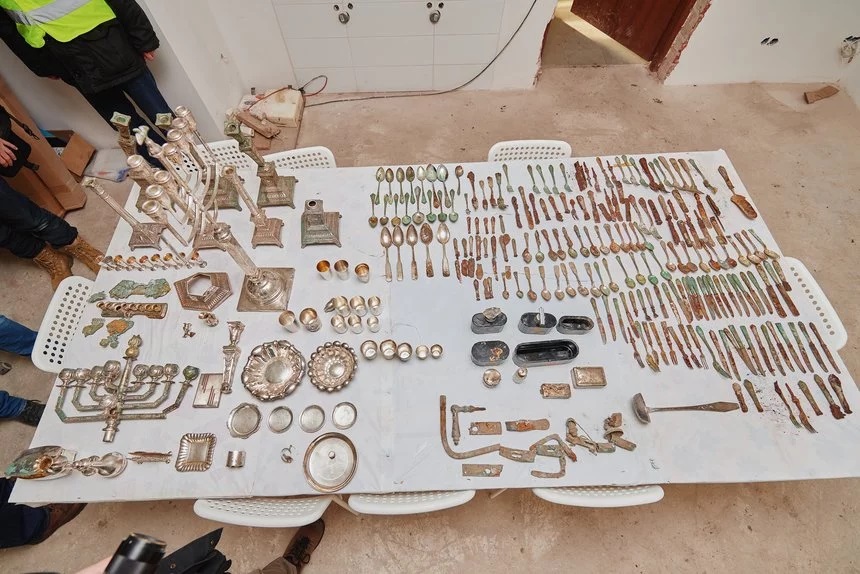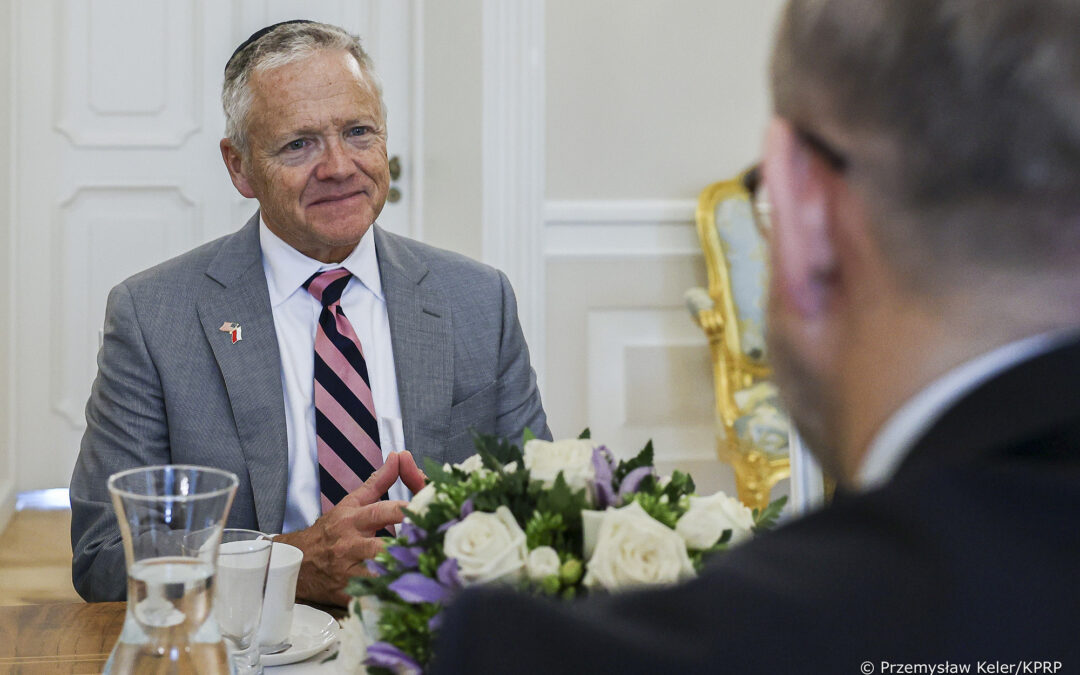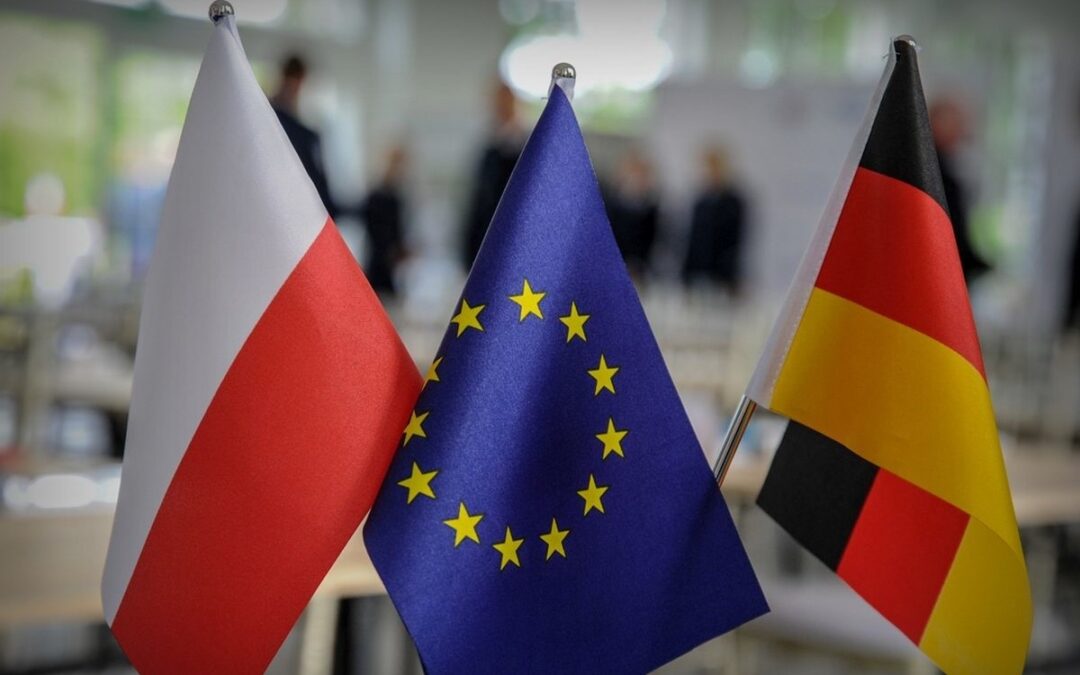A trove of over 400 items, most likely hidden by Jews during World War Two, has been discovered during the renovation of a historical building in the Polish city of Łódź.
The objects, mostly silver-plated household items, will now be transferred to a local museum. Among the discoveries were two hanukkiah candelabras that, eight decades after being hidden, were used by the city during its celebration of Hannukah last month.
The find was made last year during work on an old tenement house on Północna Street in the centre of Łódź. The contractor immediately contacted the city’s conservation authority, ŁWKZ, which arrived to find around 280 metal objects buried in the ground.
ŁWKZ ordered building work to be suspended while further archaeological research was carried out. That resulted in dozens more objects being found. The trove included candlesticks, a cigarette case, cutlery, glasses and a set for toiletries.
The local Jewish community was kept informed during the process. Two of the unearthed hanukkiahs were lit last month during a Hannukah celebration organised by the municipal authorities.
The objects are now being cleaned and restored, after which they will now be donated to the city’s archaeological and ethnographic museum. There are then plans to hold a special public exhibition of the items.
“The discovery is remarkable, especially the quantity,” said Agnieszka Kowalewska-Wójcik, head of the city’s board of municipal investments. “These are extremely valuable historical items that testify to the history of the inhabitants of this building.”
“The nature of the objects suggests that they were deposited all at once, most likely at the beginning of World War Two, by followers of Judaism,” added ŁWKZ.
Before the war, Łódź had a thriving Jewish community, over 230,000 strong, representing around one third of the city’s population. After the Nazi German invasion of Poland in 1939, Jews were forced to live in a newly created ghetto.
From 1942, mass deportations to the gas chambers of the Chełmno death camp began and in 1944 the ghetto was liquidated. While some of the few thousand Łódź Jews to survive the Holocaust returned to the city, most then left again during the anti-Jewish campaign led by Poland’s communist authorities in 1968.
By 2006, there were only 600 Jewish residents remaining in Łódź, though the city is still home to one of the largest Jewish cemeteries in the world.
The Łódź Jewish Cemetery, also known as the New Jewish Cemetery, was once the largest Jewish cemetery in Poland and one of the largest in the world. Located in Łódź on Bracka Street, the necropolis was opened in November 10, 1892. It occupies around 44 hectares of land pic.twitter.com/Xq6XKBajTb
— Marysia (@marysia_cc) November 10, 2020
Main image credit: lodz.pl

Daniel Tilles is editor-in-chief of Notes from Poland. He has written on Polish affairs for a wide range of publications, including Foreign Policy, POLITICO Europe, EUobserver and Dziennik Gazeta Prawna.




















